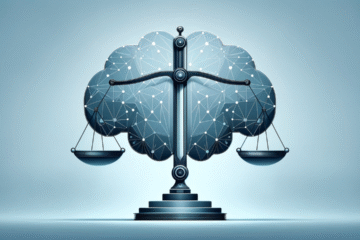
This Article is written by Shubhojeet Manohar of LL.B of 5th Semester of New Law College Bharati Vidyapeeth, Pune, an intern under Legal Vidhiya
Abstract:
This comparative analysis delves into the constitutional law frameworks of the United States and India, two significant democracies with distinctive historical, philosophical, and structural underpinnings. Examining the origins, philosophical origins, government structures, fundamental rights, and amendment processes, this study uncovers the fascinating similarities and disparities that shape the legal systems of these nations. Highlighting the paramount role of the judiciary in safeguarding constitutional ideals and individual rights, this article provides valuable insights into how these constitutional principles impact citizens’ lives and the functioning of government. By delving into the historical and philosophical roots, this analysis sheds light on how different historical contexts and philosophical values have shaped the constitutional provisions, institutions, and judicial interpretations in these countries.
Keywords:
Constitutional law, United States, India, judiciary, constitutional ideals, individual rights, government structures, fundamental rights, amendment processes, separation of powers, parliamentary system, negative liberties, positive obligations, judicial review, historical origins, philosophical origins, comparative analysis.
Introduction
Constitutional law forms the bedrock of a nation’s legal framework, setting out the fundamental principles, structures, and rights that govern the state and its citizens. Two significant democracies, the United States of America and the Republic of India, possess distinctive constitutional systems that reflect their historical, cultural, and political contexts. This article undertakes a comparative exploration of constitutional law in America and India, focusing on key aspects such as the origins, structure, fundamental rights, and amendment processes.
Historical Origins:
America:
The historical origins of the American Constitution can be traced back to the context of the American Revolutionary War (1775-1783). The American colonies, under British rule, sought greater autonomy and freedom from oppressive policies. The Continental Congress and the subsequent Constitutional Convention of 1787 were pivotal in drafting the United States Constitution. Influenced by Enlightenment ideas and the writings of philosophers like John Locke and Montesquieu, the framers aimed to establish a system that protected individual rights, limited governmental power through checks and balances, and ensured representation of citizens.
India:
India’s historical context in shaping its constitution is characterized by a struggle against colonialism and a quest for self-determination. The Indian National Congress and various nationalist movements led to India’s independence from British rule in 1947. The drafting of the Indian Constitution was influenced by a diverse range of factors, including the experiences of colonial governance, socio-economic disparities, and the need to accommodate the country’s immense diversity. The Constitution was framed by a Constituent Assembly that included leaders from various ideological backgrounds, resulting in a unique blend of Western constitutional principles and indigenous socio-cultural values.
Philosophical Origins:
America:
The principles of individualism, limited government, and the defence of individual liberty are reflected in the American Constitution. The authors of the Constitution, who were influenced by the writings of Enlightenment thinkers, wanted to establish a government that was legitimated by the agreement of the governed. John Locke’s theories, with their emphasis on natural rights and social contract theory, had a significant impact. A Bill of Rights that protects essential liberties including the right to free expression, the right to practise one’s religion, and the right to due process was included as a result of this philosophical basis.
India:
The aim for social justice, equality, and inclusivity is a hallmark of the Indian Constitution’s conceptual foundations. Indian leaders aimed to combat decades of discrimination, persecution, and socioeconomic disparity. The Constitution includes socialist, democratic, and secularist values, demonstrating a dedication to building a just and fair society. The Constitution was significantly influenced by philosophers like B.R. Ambedkar, who emphasised the need of giving marginalised populations the rights and chances they need to advance.
- Comparative Significance:
A comparative analysis that looks at how these distinctive foundations have been reflected in the constitutional provisions, institutions, and judicial interpretations of the American and Indian constitutions is set up by an examination of their historical and philosophical roots. The approaches to government rights, and social justice in these two countries have been moulded by various historical settings and philosophical concerns, which can be highlighted by understanding these roots.
Structure of Government
The structures of government in the United States and India are shaped by their respective constitutional frameworks. While both countries are democratic republics, they differ significantly in their governmental structures due to historical, cultural, and constitutional factors. Here’s a comparative breakdown of the governmental structures based on constitutional law in America and India:
- United States:
1. Separation of Powers:
The United States follows a strict separation of powers among its three branches of government: the Legislative Branch (Congress), the Executive Branch (President), and the Judicial Branch (Federal Courts). Each branch has distinct powers and functions to prevent the concentration of authority.
2. Legislative Branch:
The US Congress consists of two chambers: the House of Representatives and the Senate.
Congress is responsible for making federal laws, and its members are elected by the citizens.
3. Executive Branch:
The President is the head of the Executive Branch and serves as both the head of state and head of government.
The President is responsible for executing and enforcing laws, conducting foreign affairs, and serving as the Commander-in-Chief of the military.
4. Judicial Branch:
The federal judiciary, headed by the US Supreme Court, interprets and applies the law in cases involving federal law, the Constitution, and disputes between states.
Federal judges are appointed for life to ensure their independence.
- India:
1. Parliamentary System:
India operates under a parliamentary system, where the President is the ceremonial head of state, and the Prime Minister is the head of government.
2. Legislative Branch:
The Parliament of India consists of two houses: the Lok Sabha (House of the People) and the Rajya Sabha (Council of States).
The Parliament is responsible for making laws at the national level.
3. Executive Branch:
The President of India is the head of state and exercises his/her powers on the advice of the Council of Ministers.
The Prime Minister is the head of government and leads the executive branch, which is responsible for the administration of the country.
4. Judicial Branch:
The judiciary in India is independent and interprets the law to ensure its constitutionality and just implementation.
The Supreme Court of India is the highest court and has the authority to hear cases related to the Constitution and legal matters.
Comparison:
- In the US, the separation of powers is more rigid, with clear divisions among the three branches. In India, the executive and legislative branches are more intertwined due to the parliamentary system.
- The US President is directly elected by the Electoral College, whereas the Indian President is elected by an Electoral College consisting of elected members of both houses of Parliament and state legislatures.
- While both countries have judicial review, the Indian Supreme Court plays a more active role in shaping public policy and safeguarding fundamental rights.
- India’s multi-tiered government structure includes federal, state, and local levels of governance, while the US has a federal structure with powers divided between the federal government and states.
In summary, the structures of government in the US and India are defined by their constitutional principles, with variations based on their historical contexts, philosophies, and democratic practices.
Fundamental Rights
Fundamental rights, which protect individual liberties and establish the limits of government power, are a cornerstone of constitutional law in both the United States and India. However, the two countries have different approaches and scopes when it comes to these rights. Here is a comparative analysis of fundamental rights in the constitutional laws of America and India:
- United States:
- Bill of Rights: The United States Constitution incorporates the Bill of Rights, which comprises the first ten amendments. These amendments explicitly protect individual rights such as freedom of speech, religion, the press, and the right to bear arms.
- Negative Liberties: American fundamental rights are often characterized as negative liberties, meaning they primarily restrict government action. They aim to prevent government intrusion into specific areas of life and protect individuals from government overreach.
- Enforcement: The U.S. Supreme Court plays a crucial role in interpreting and enforcing fundamental rights through landmark decisions. Notable cases include “Brown v. Board of Education” (1954) regarding racial segregation, and “Roe v. Wade” (1973) regarding abortion rights.
- Amendment Process: While the Bill of Rights is challenging to amend, the U.S. Constitution allows for amendments, reflecting changing societal values. For example, the 19th Amendment granted women the right to vote.
- India:
- Fundamental Rights: The Indian Constitution, in Part III, guarantees a comprehensive set of fundamental rights that include both individual and group rights. These rights encompass freedom of speech, religion, and assembly, as well as rights to equality, education, and protection from discrimination.
- Positive Obligations: Indian fundamental rights include positive obligations on the state to ensure social and economic justice, such as the right to education and the right to work. These rights aim to uplift marginalized groups and reduce inequalities.
- Enforcement: The Indian Supreme Court plays a proactive role in protecting and expanding fundamental rights. The court’s landmark decision in “Kesavananda Bharati v. State of Kerala” (1973) established the basic structure doctrine, limiting Parliament’s power to amend certain core provisions of the Constitution.
- Limitations: Fundamental rights in India are not absolute and subject to reasonable restrictions. These restrictions are intended to balance individual rights with the interests of the state and society.
- Comparison:
- While both countries protect fundamental rights, the United States focuses more on negative liberties, while India incorporates positive obligations aimed at addressing social and economic disparities.
- India’s fundamental rights are more comprehensive and incorporate a broader range of rights, including those addressing social and economic welfare.
- The U.S. Bill of Rights is relatively stable, with only a few amendments over time, while the Indian Constitution has seen several amendments related to fundamental rights.
- In both countries, the judiciary plays a crucial role in interpreting and safeguarding fundamental rights, but the Indian Supreme Court has been more active in expanding and redefining these rights.
In summary, while the United States and India both prioritize fundamental rights in their constitutional laws, the scope and approach to these rights differ significantly, reflecting their distinct historical and social contexts.
Amendment Process
The amendment processes for constitutional law in America (the United States) and India differ significantly due to the distinctive nature of their constitutions. Here is a comparative analysis of the amendment processes in both countries:
America:
- Article V of the U.S. Constitution: The procedure for amending the U.S. Constitution is outlined in Article V.
- Proposal Stage: An amendment can be proposed in two ways:
- Congressional Proposal: An amendment can be proposed by a two-thirds (supermajority) majority vote in both the House of Representatives and the Senate. This is the most common method.
- Constitutional Convention: Alternatively, a national constitutional convention can be called by Congress if requested by two-thirds of state legislatures. However, this method has never been used to date.
- Ratification Stage: Once proposed, an amendment must be ratified by three-fourths (i.e., 38 out of 50) of the state legislatures or by conventions within the states. The choice between state legislatures and conventions is made by Congress.
- Time Limit: Congress can set a time limit for ratification, which has been used in the past. Amendments not ratified within the specified time frame are considered inactive.
- Rarity of Amendments: The U.S. Constitution has been amended 27 times since its adoption in 1787, illustrating the difficulty of amending the document.
India:
- Article 368 of the Indian Constitution: The process for amending the Indian Constitution is outlined in Article 368.
- Proposal Stage: An amendment to the Indian Constitution can be initiated by either house of Parliament (the Lok Sabha or the Rajya Sabha) or by the President. The process requires a special majority, which means it must be passed by a majority of not less than two-thirds of the members present and voting and by a majority of the total membership of each house.
- Ratification Stage (if applicable): Some amendments may require ratification by state legislatures. This applies to amendments that affect federalism, the representation of states in Parliament, or other provisions specified in Article 368. If ratification is needed, it must be passed by a majority of state legislatures (at least half the states) within a specified time.
- No Constitutional Convention: Unlike the U.S., India does not have a provision for convening a constitutional convention. All amendments must go through Parliament.
- No Time Limit: There is no provision for setting a time limit for ratification in the Indian Constitution. Once passed by Parliament or state legislatures (if required), an amendment is considered active.
- Amendments Act: After an amendment is passed, it becomes part of the Constitution through an Amendments Act.
- Frequency of Amendments: The Indian Constitution has been amended numerous times since its adoption in 1950, reflecting the flexibility of the amendment process.
- Comparison:
- The U.S. has a more rigid and challenging process for amending its Constitution, while India’s process is more flexible and has led to a higher frequency of amendments.
- In the U.S., states have no role in proposing amendments, whereas in India, state ratification is required for certain types of amendments.
- The U.S. Constitution has been amended relatively infrequently, whereas the Indian Constitution has been amended multiple times to address changing societal needs and legal interpretations.
In summary, while both countries have established amendment processes for their respective constitutions, the processes differ significantly in terms of flexibility, ease of amendment, and the role of states or regions in the process.
Conclusion
The striking similarities and common values that underlie these two democratic countries are highlighted by this comparative review of constitutional law in the United States and India. Both countries acknowledge the crucial part the court plays in defending citizen rights and ensuring that the government acts within the bounds of the constitution. Additionally, they individually use the judicial review tool to stop the passage of unfair or unlawful laws.
When we look at the constitution of the United States’ historical roots, we see that it was created in the furnace of the American Revolutionary War, influenced by Enlightenment ideals, and intended to uphold individual liberties and restrain the authority of the federal government. India’s constitution, on the other hand, was created during the fight for independence from colonial control with the intention of addressing historical injustices, advancing social justice, and valuing diversity.
These constitutions’ intellectual underpinnings highlight their different priorities even more. The Indian Constitution is committed to attaining social justice, equality, and inclusivity, in contrast to the U.S. Constitution, which places a significant focus on individual liberty and limited government.
When comparing the three departments of government, the United States uses a rigorous separation of powers, and its President is chosen by the people. India, in contrast, has a parliamentary administration where the Prime Minister is in charge and the President is only a ceremonial figure.
Both constitutional systems place a strong emphasis on fundamental rights, but their approaches and scope are different. While India places positive obligations on the state to remedy socioeconomic gaps, the U.S. emphasizes negative liberties.
The procedures for amending laws differ greatly amongst different countries. While India has a flexible system that has allowed for several adjustments in response to changing societal requirements, the United States has a strict process with few amendments.
In conclusion, the frameworks of the constitutional laws of the United States and India each represent certain historical trajectories and societal priorities. These disparities affect how their governments operate and how their citizens live their daily lives; they are not purely academic. Nevertheless, as they face the opportunities and challenges of the twenty-first century, both countries share a dedication to democracy, the rule of law, and the defense of fundamental rights.
References:
- The Constitution of the United States. (Last visited on Monday 28/08/2023)
- The Constitution of India. (Last visited on Monday 28/08/2023)
- Basu, D. (2017). Introduction to the Constitution of India. LexisNexis.
- https://unacademy.com/content/bpsc/study-material/polity/the-us-constitution-and-the-indian-constitution/ (Last visited on Thursday 31/08/2023)
- https://www.civilsdaily.com/constitution-of-usa-features-comparison-with-indian-other-constitutions/ (Last visited on Wednesday 30/08/2023)
- https://blog.ipleaders.in/comparative-study-separation-power-india-usa/ (Last visited on Tuesday 29/08/2023)
- https://www.ourlegalworld.com/difference-between-indian-american-constitution/(Last visited on Tuesday 29/08/2023)
- https://www.legalbites.in/topics/articles/difference-between-indian-law-and-american-law-898536 (Last visited on Tuesday 29/08/2023)




0 Comments